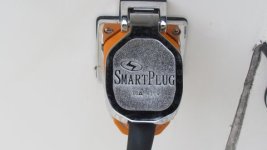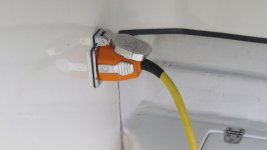nmitch2859
New member
I am having problems with my shore power. At first, I was not getting any power to my outlets. I did check for continuity, first at main breaker, tested good. Then, with power on ,breaker on nothing. tried resetting gfci. No go. Tried moving shore power cord to another box. Worked after changing main breaker. Wiggled shore power cord at inlet. Then I had good power. Deduced it was inlet. I am currently changing shore power inlet. Black was burnt and had missing insulation. I am changing the hole cord from shore power inlet to main breaker. I am using a number 6 3 stand tined. Has anyone else had the same problems? 


